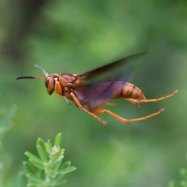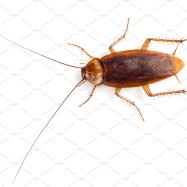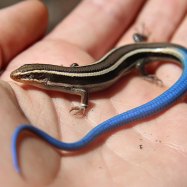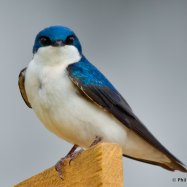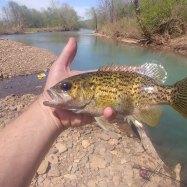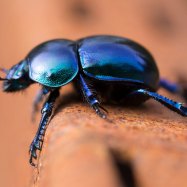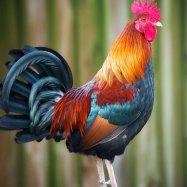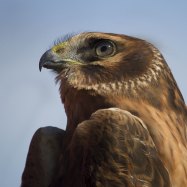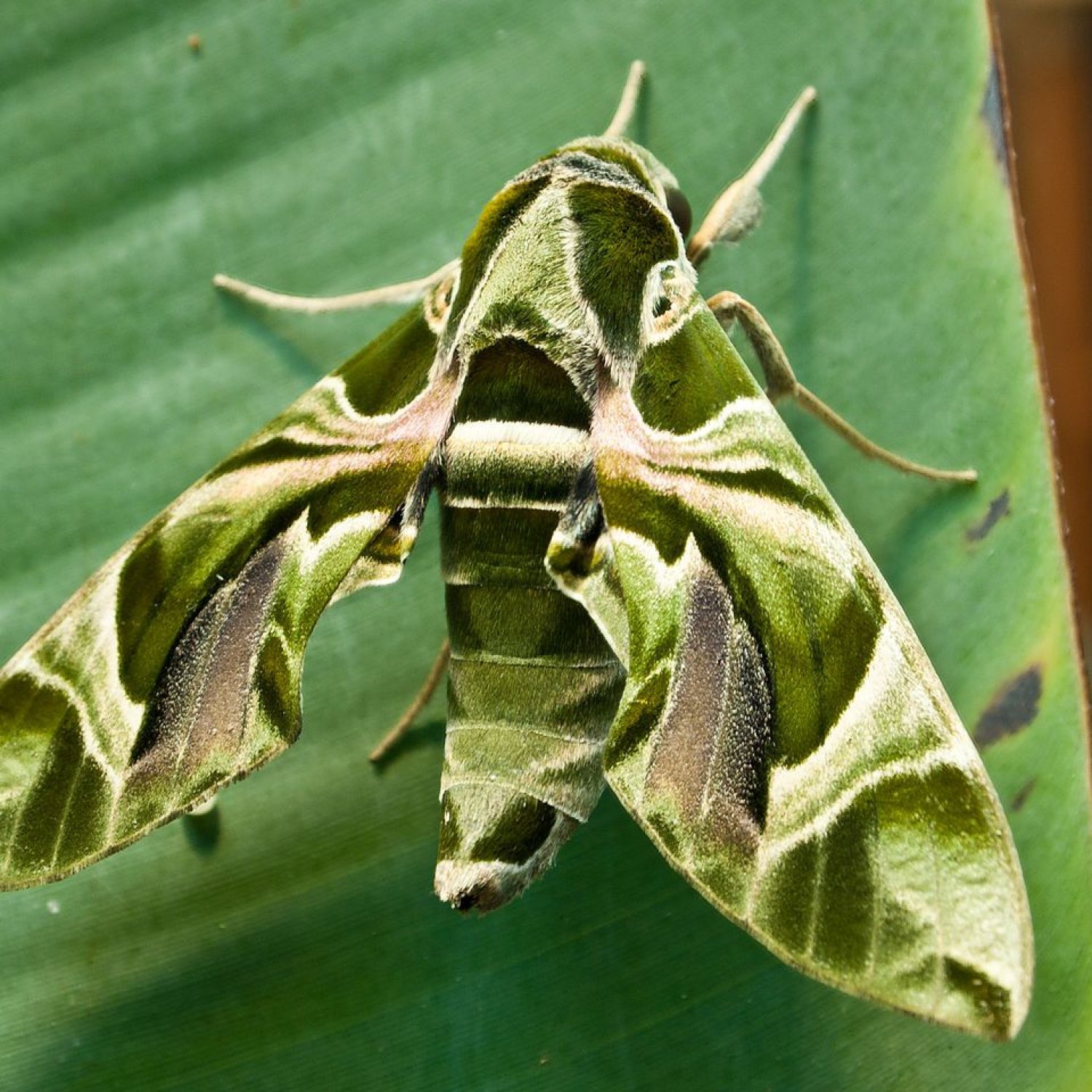
Oleander Hawk Moth
The body length of an adult Oleander Hawk Moth can range from 5 to 8 centimeters.
The Oleander Hawk Moth, also known as Sphingidae, is a beautiful and robust creature with a wingspan of up to 12 cm. Found in urban, rural, and natural areas, this moth can range from 5 to 8 cm in body length. Keep an eye out for this unique species in your local surroundings! #Animals #OleanderHawkMoth #Nature #Wildlife
Animal Details Summary:
Common Name: Oleander Hawk Moth
Kingdom: Animalia
Habitat: Oleander Hawk Moths can be found in a variety of habitats, including gardens, parks, forests, and agricultural areas.
The Majestic Oleander Hawk Moth
Nature has a way of creating the most beautiful and awe-inspiring creatures. Among the many fascinating creatures on this planet, there is one that stands out with its unique features and graceful movements - the Oleander Hawk Moth (Daphnis nerii). This magnificent insect belongs to the Kingdom Animalia, Phylum Arthropoda, and Class Insecta. Its scientific name Daphnis nerii is derived from the Greek mythological figure Daphnis, a shepherd known for his beauty Oleander Hawk Moth. Likewise, this moth's exquisite appearance has earned it the common name, Oleander Hawk Moth.A True Masterpiece of Evolution
The Oleander Hawk Moth is a member of the Order Lepidoptera and the Family Sphingidae. Its origins can be traced back to the Mediterranean region, where it is considered native. It can be found in countries such as Spain, Italy, Greece, Turkey, and parts of the Middle East. However, these enchanting moths have also been observed in other regions, including parts of Africa, Asia, and North America. This distribution signifies the resilience and adaptability of this species.These moths have a fascinating life cycle, starting from eggs that are laid on the underside of Oleander (Nerium oleander) leaves, considered to be their primary host plant. The larvae, also known as caterpillars, are voracious eaters and feed on the Oleander leaves. As they grow, the larvae molt several times, shedding their old skin and growing a new one Onager.
After approximately four weeks, the fully-grown larvae pupate in the soil, creating a cocoon for themselves. In this stage, they undergo metamorphosis, transforming into the majestic Oleander Hawk Moth. The adult moths emerge from the cocoons after approximately two weeks. They have a short lifespan of only a few weeks, during which they focus on reproduction and pollination.
A Versatile Insect in Terms of Habitat and Feeding Habits
One of the most remarkable features of the Oleander Hawk Moth is its adaptability to a wide range of habitats. They can be found in gardens, parks, forests, and agricultural areas. They are also commonly seen in urban areas, making them a familiar sight to many city dwellers.Despite their name, Oleander Hawk Moths are not limited to Oleander plants for food. The larvae may feed on other plants, such as Jasmine and Honeysuckle, but they prefer Oleander leaves. On the other hand, the adult moths feed on the nectar of various flowers, including Jasmine, Honeysuckle, and Petunia. This versatile feeding behavior makes them important pollinators in their habitat.
Adorned with Beauty
One cannot miss the Oleander Hawk Moth with its striking appearance. The wings of this moth are primarily brown with shades of pink, yellow, and white. The wings also have black and white stripes, adding to its beauty. Its slender, long wings give it a graceful and elegant appearance while in flight. The wingspan of this moth can reach up to 12 centimeters, making it an impressive sight to behold.Apart from its wings, the Oleander Hawk Moth has a robust body. The body length of an adult can range from 5 to 8 centimeters. Unlike other insects, it has a slightly thicker body, giving it a more substantial presence. Despite its size, an Oleander Hawk Moth is relatively light, weighing only 2 to 4 grams. This makes them agile flyers, gliding through the air with ease.
Fascinating Fascinations of the Oleander Hawk Moth
The Oleander Hawk Moth's beauty and grace may capture our attention, but there is more to this insect than meets the eye. It holds a vital role in various cultures and has been a subject of fascination for many throughout history.In ancient Greece, the Oleander Hawk Moth was associated with the goddess Hebe, who was considered the protector of youth and vitality. In some regions, seeing this moth is said to bring good luck and prosperity. Its transformative journey from a lowly caterpillar to a magnificent moth has also been a source of inspiration for many artists and writers.
Within the field of entomology, the Oleander Hawk Moth has been a subject of interest for its unique features and behaviors. Scientists have studied their remarkable capabilities, such as their ability to navigate long distances and their keen sense of smell.
Conservation Efforts for the Oleander Hawk Moth
Despite its widespread distribution, the Oleander Hawk Moth is facing several threats to its survival. One major threat is the use of pesticides in agriculture, which can harm both the moths and their host plants. Conversion of natural habitats for urban or agricultural development also poses a risk to their population.To protect this splendid species, conservation efforts have been put in place. In some regions, Oleander plants are grown specifically to attract and support the caterpillars of this moth. This not only benefits the moths but also promotes the growth of native plants. Raising awareness about the importance of these moths in pollination and their role in ecosystems is also crucial for their conservation.
The Oleander Hawk Moth and Humans
The relationship between humans and the Oleander Hawk Moth dates back centuries. As mentioned earlier, it has been a subject of admiration and inspiration for many artists and writers. In some regions, it is also considered a symbol of love and transformation.On a more practical level, the Oleander Hawk Moth has been helpful in pollination and is considered beneficial to agriculture. Its larvae can also be useful in controlling the spread of Oleander plants, as they feed on the leaves, preventing them from growing out of control.
A Sight to Remember
The Oleander Hawk Moth is truly a masterpiece of evolution. From its striking appearance to its versatile behavior, it is a marvel to behold. This insect has captured the interest of many, and its significance in various cultures and ecosystems cannot be denied.Next time you see a flutter of brown and pink in your garden or park, take a closer look. It may just be the magnificent Oleander Hawk Moth, bringing with it a touch of magic and beauty. Let us continue to appreciate and protect these extraordinary creatures so that they may continue to grace our world with their presence.

Oleander Hawk Moth
Animal Details Oleander Hawk Moth - Scientific Name: Daphnis nerii
- Category: Animals O
- Scientific Name: Daphnis nerii
- Common Name: Oleander Hawk Moth
- Kingdom: Animalia
- Phylum: Arthropoda
- Class: Insecta
- Order: Lepidoptera
- Family: Sphingidae
- Habitat: Oleander Hawk Moths can be found in a variety of habitats, including gardens, parks, forests, and agricultural areas.
- Feeding Method: The Oleander Hawk Moth larvae feed on the leaves of Oleander (Nerium oleander), considered to be their primary host plant. The adult moths feed on the nectar of various flowers, including Jasmine, Honeysuckle, and Petunia.
- Geographical Distribution: Oleander Hawk Moths are native to the Mediterranean region. They can be found in countries such as Spain, Italy, Greece, Turkey, and parts of the Middle East. They have also been observed in other regions, including parts of Africa, Asia, and North America.
- Country of Origin: Mediterranean region
- Location: They can be found in a wide range of locations, including urban areas, rural areas, and natural habitats.
- Animal Coloration: The Oleander Hawk Moth has a distinct coloration. Its wings are primarily brown with various shades of pink, yellow, and white. The wings also have black and white stripes.
- Body Shape: The Oleander Hawk Moth has a robust body with long, slender wings. Its wingspan can reach up to 12 centimeters.
- Length: The body length of an adult Oleander Hawk Moth can range from 5 to 8 centimeters.
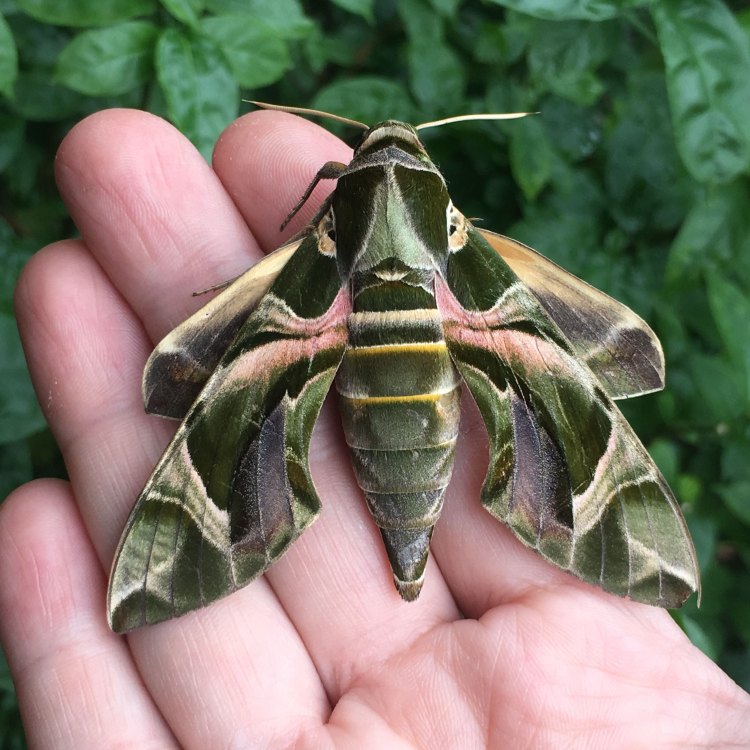
Oleander Hawk Moth
- Adult Size: The wingspan of an adult Oleander Hawk Moth can range from 10 to 12 centimeters.
- Average Lifespan: The average lifespan of an Oleander Hawk Moth is around 2 months.
- Reproduction: Oleander Hawk Moths reproduce sexually.
- Reproductive Behavior: The male Oleander Hawk Moths locate females using their keen sense of smell. They perform courtship flights and release pheromones to attract females.
- Sound or Call: The Oleander Hawk Moth does not produce any specific sounds or calls.
- Migration Pattern: Oleander Hawk Moths are known for their long-distance migrations.
- Social Groups: Oleander Hawk Moths are solitary creatures and do not form social groups.
- Behavior: During the daytime, the Oleander Hawk Moth is often inactive and rests in shady areas. It becomes active during the evening and night.
- Threats: The major threats to Oleander Hawk Moths include habitat loss, pesticide use, climate change, and light pollution.
- Conservation Status: The conservation status of the Oleander Hawk Moth is not evaluated by the International Union for Conservation of Nature (IUCN). However, they are relatively common and widespread.
- Impact on Ecosystem: Oleander Hawk Moths play a role in pollination, as they feed on the nectar of various flowers. They also serve as a food source for predators such as birds and bats.
- Human Use: There are no significant human uses of Oleander Hawk Moths.
- Distinctive Features: The distinctive features of the Oleander Hawk Moth include its large size, brown coloration, and intricate wing patterns.
- Interesting Facts: 1. The Oleander Hawk Moth is known for its long proboscis, which it uses to extract nectar from flowers. 2. The larvae of the Oleander Hawk Moth are commonly known as Oleander Caterpillars. 3. The Oleander Hawk Moth is one of the largest moths found in the Mediterranean region.
- Predator: The Oleander Hawk Moth is preyed upon by various animals, including birds, bats, and small mammals.
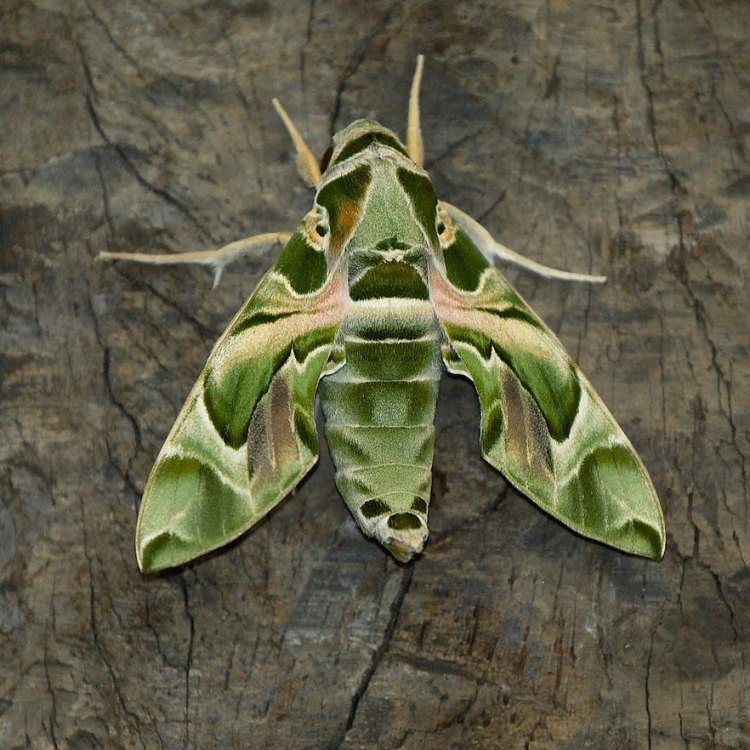
Daphnis nerii
The Fascinating Oleander Hawk Moth: A Closer Look at a Mighty Insect
When we think of moths, we often envision small and unassuming insects fluttering around our homes at night. However, there is one moth that stands out among the rest - the Oleander Hawk Moth. This magnificent creature has captured the attention of entomologists and nature enthusiasts alike with its striking appearance and interesting behavior. In this article, we will take a closer look at the Oleander Hawk Moth and explore its unique features, behaviors, and role in the ecosystem PeaceOfAnimals.Com.Majestic Appearance
The Oleander Hawk Moth (scientific name: Daphnis nerii) is a large and impressive moth found in the Mediterranean region and parts of Asia and Africa. It belongs to the family Sphingidae, also known as the hawk moths, due to their ability to fly swiftly like a hawk. The Oleander Hawk Moth has a wingspan of 10 to 12 centimeters, making it one of the largest moths in its range. Its wings are a beautiful shade of brown with intricate patterns, resembling a piece of art.One of the most distinctive features of the Oleander Hawk Moth is its long proboscis, which is used to extract nectar from flowers. These moths are active pollinators, and their long tongues allow them to reach deep into the flowers' nectar glands, ensuring their survival. The larvae of the Oleander Hawk Moth, commonly known as Oleander Caterpillars, are also visually striking. They have bright colored stripes and spiny bodies, making them easily recognizable in gardens and fields.
Survival Strategy: Migration and Reproduction
The Oleander Hawk Moth has a relatively short lifespan of around 2 months Opabinia. It spends most of its adult life flying and searching for food and mates. These moths reproduce sexually, with the male moths using their keen sense of smell to locate females. They release pheromones to attract females, and courtship flights are performed to impress and secure a mate.Another interesting aspect of the Oleander Hawk Moths' survival strategy is their long-distance migrations. These moths are known to travel thousands of kilometers in search of suitable breeding grounds and food sources. This behavior allows them to expand their range and avoid harsh weather conditions, ensuring their survival as a species.
Solitary Creatures with Behavioral Differences
The Oleander Hawk Moths are solitary creatures and do not form any social groups. During the daytime, they are often inactive and rest in shady areas to avoid the heat. However, they become active at dusk and throughout the night, using their good vision and strong sense of smell to navigate and find food. This behavior is opposite to most other moths, which are primarily attracted to light sources at night.Unlike other moths, the Oleander Hawk Moths do not produce any specific sounds or calls to communicate. They rely on their pheromones and body posture to convey messages to potential mates and predators. Additionally, these moths have a unique defense mechanism, where they play dead when they sense a potential threat. This behavior helps them avoid predators and survive in their environment.
Threats and Conservation Status
While the Oleander Hawk Moth is relatively common and widespread, it faces several threats that may impact its population in the future. Habitat loss due to urbanization and agriculture, pesticide use, and climate change are the major threats to these moths. Additionally, light pollution in urban areas disrupts their natural behavior and can confuse them, leading to adverse effects on their survival.Despite these threats, the conservation status of the Oleander Hawk Moth is not evaluated by the International Union for Conservation of Nature (IUCN). However, it is crucial to monitor and protect their populations, as they play a vital role in the ecosystem. As pollinators, they aid in plant reproduction and serve as a food source for various predators, maintaining a balance in the ecosystem.
A Mysterious and Mighty Insect
The Oleander Hawk Moth is a mysterious and mighty insect that continues to intrigue and captivate researchers and nature lovers. These fascinating creatures play a vital role in the ecosystem, and their unique features and behaviors make them stand out among other moths. As we continue to learn more about them, it is essential to protect their habitats and raise awareness about their importance in maintaining a healthy and balanced environment.Fun Facts
To wrap up our exploration of the Oleander Hawk Moth, here are some interesting facts about this magnificent insect:1. The Oleander Hawk Moth is known for its long proboscis, which it uses to extract nectar from flowers. It can reach up to 25cm in length, which is longer than its body size.
2. The larvae of the Oleander Hawk Moth are commonly known as Oleander Caterpillars because they feed on the leaves of the Oleander plant. However, they are also found on other plants, including jasmine and milkweed.
3. The Oleander Hawk Moth is one of the largest moths found in the Mediterranean region, with a wingspan of up to 12 centimeters.
4. The predator-prey relationship of the Oleander Hawk Moth is a delicate balance. While they serve as food for birds, bats, and small mammals, the Oleander Caterpillars have a defense mechanism where they secrete a toxic substance, making them unpalatable to most predators.
5. There are no significant human uses of Oleander Hawk Moths. However, their larvae are used in some regions as fishing bait due to their attractive coloration and the belief that they attract more fish.
In conclusion, the Oleander Hawk Moth is a magnificent insect that deserves our attention and protection. Its unique features, behaviors, and role in the ecosystem highlight the importance of biodiversity in our world. As we continue to learn more about these mysterious creatures, let us also strive to conserve their habitats and appreciate their presence in our environment.
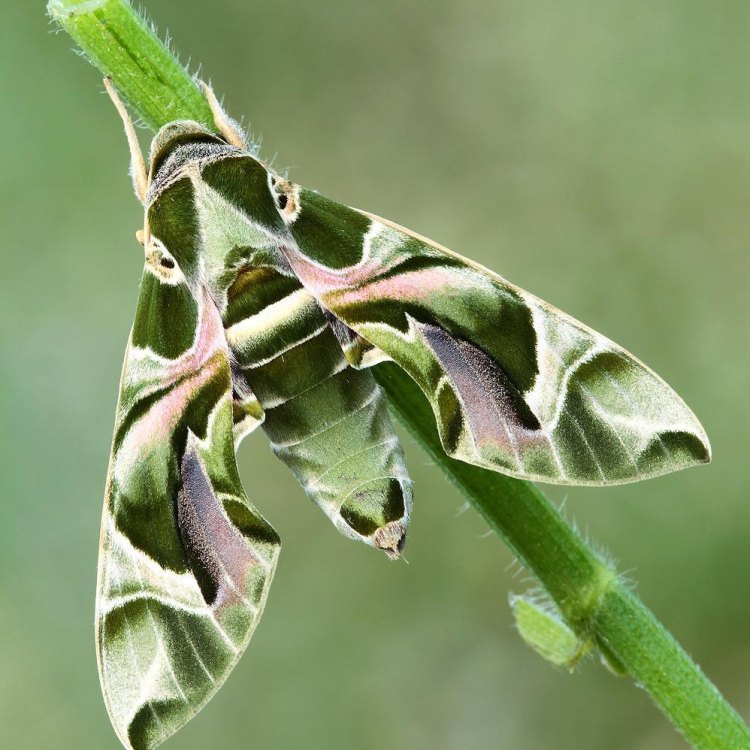
The Majestic Oleander Hawk Moth
Disclaimer: The content provided is for informational purposes only. We cannot guarantee the accuracy of the information on this page 100%. All information provided here may change without prior notice.


